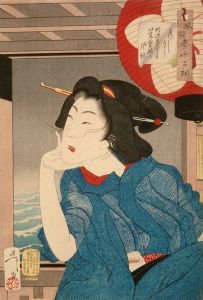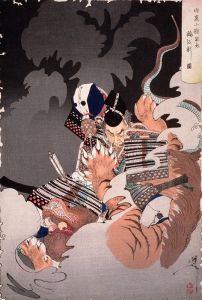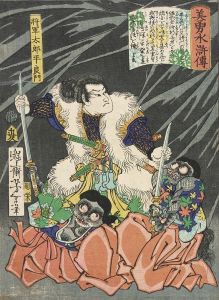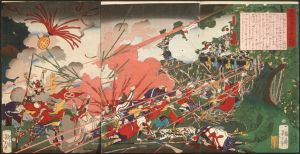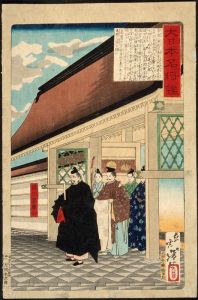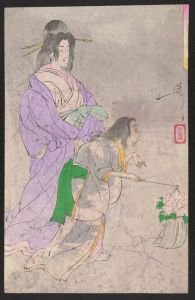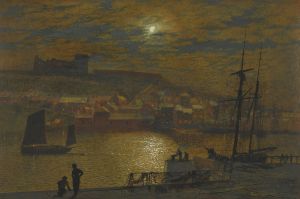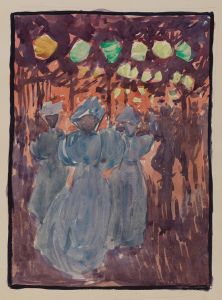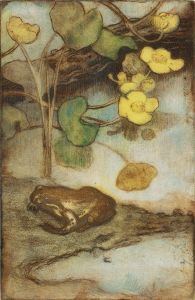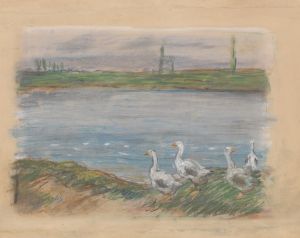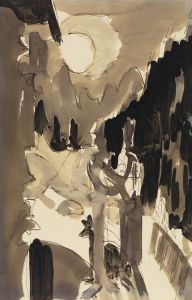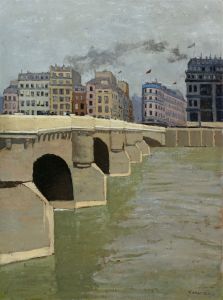
Sumiyoshi no meigetsu
A hand-painted replica of Tsukioka Yoshitoshi’s masterpiece Sumiyoshi no meigetsu, meticulously crafted by professional artists to capture the true essence of the original. Each piece is created with museum-quality canvas and rare mineral pigments, carefully painted by experienced artists with delicate brushstrokes and rich, layered colors to perfectly recreate the texture of the original artwork. Unlike machine-printed reproductions, this hand-painted version brings the painting to life, infused with the artist’s emotions and skill in every stroke. Whether for personal collection or home decoration, it instantly elevates the artistic atmosphere of any space.
"Sumiyoshi no Meigetsu" (translated as "The Harvest Moon at Sumiyoshi") is a woodblock print created by the renowned Japanese artist Tsukioka Yoshitoshi (1839–1892). Yoshitoshi is widely regarded as one of the last great masters of the ukiyo-e tradition, a genre of Japanese art that flourished during the Edo period (1603–1868) and into the early Meiji era (1868–1912). His works are celebrated for their innovative compositions, technical mastery, and emotional depth, often blending traditional themes with modern influences.
This particular print, "Sumiyoshi no Meigetsu," is part of Yoshitoshi's acclaimed series Tsuki hyakushi (One Hundred Aspects of the Moon), which was published between 1885 and 1892. The series consists of 100 individual woodblock prints, each inspired by legends, historical events, literature, or folklore, with the unifying theme of the moon. The series is considered one of Yoshitoshi's masterpieces and a significant contribution to the ukiyo-e tradition, showcasing his ability to combine poetic imagery with narrative storytelling.
"Sumiyoshi no Meigetsu" depicts a serene and evocative scene set at the Sumiyoshi Shrine, a famous Shinto shrine located in Osaka, Japan. The shrine is dedicated to the Sumiyoshi kami (deities), who are associated with safe sea travel, poetry, and harmony. The print captures the beauty of the harvest moon, a recurring motif in Japanese art and literature symbolizing abundance, reflection, and the passage of time. The composition features a lone figure, possibly a courtier or poet, gazing at the moonlit sky, surrounded by elements of nature and architecture that evoke a sense of tranquility and reverence.
Yoshitoshi's use of color, line, and shading in this print demonstrates his mastery of the woodblock printing technique and his ability to convey mood and atmosphere. The interplay of light and shadow, combined with the delicate rendering of the figure and surroundings, creates a harmonious balance that draws the viewer into the scene.
As with many prints in the Tsuki hyakushi series, "Sumiyoshi no Meigetsu" reflects Yoshitoshi's deep appreciation for Japanese cultural heritage and his desire to preserve it during a time of rapid modernization and Western influence in the Meiji era. The series as a whole is often seen as a bridge between traditional Japanese art and the emerging modern aesthetic of the late 19th century.
"Sumiyoshi no Meigetsu" remains a celebrated example of Yoshitoshi's artistic legacy and continues to be admired by art enthusiasts and scholars for its historical and cultural significance.





